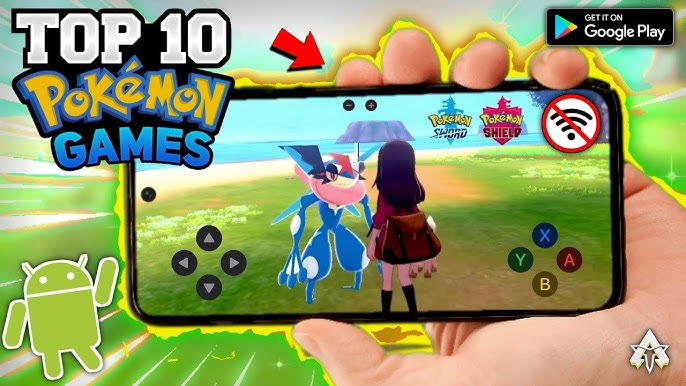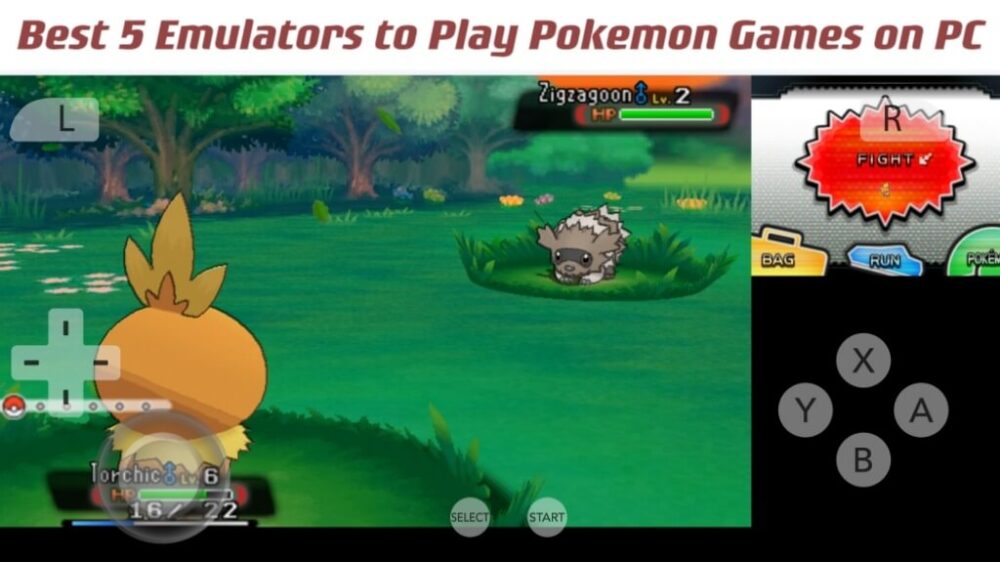Pokémon games have captivated millions of fans worldwide since their debut in 1996. Whether it’s the nostalgia of playing classic titles like Pokémon Red and Blue or the excitement of newer games like Pokémon Sword and Shield, the franchise holds a special place in the hearts of many. However, accessing older games or playing them on modern devices isn’t always straightforward. This is where Pokémon emulators come into play.
In this article, we’ll dive deep into what Pokémon emulators are, how they work, their legality, popular emulators available, and how you can use them to experience the magic of Pokémon games.
What Is a Pokémon Emulator?
A Pokémon emulator is a software program that mimics the hardware of gaming consoles such as the Game Boy, Nintendo DS, or Nintendo Switch. By doing so, it allows you to run Pokémon games designed for these consoles on your computer, smartphone, or other modern devices. Emulators recreate the functionality of the console, enabling users to play games by loading ROM files, which are digital copies of game cartridges.
Emulators are particularly useful for fans who no longer have access to older consoles or games, as well as for those who wish to enhance their gaming experience with modern features like improved graphics, save states, and speed boosts.
The Legality of Pokémon Emulators
The legality of emulators and ROMs is a gray area that varies depending on your location and how you acquire the files.

- Emulators: The creation and use of emulators are legal as long as they don’t include proprietary code from the original hardware manufacturers. Emulators are often open-source projects developed by third-party programmers.
- ROMs: Owning a ROM file for a game you don’t own physically is generally considered illegal, as it infringes on copyright laws. However, if you create a ROM backup from a game cartridge you own, some argue it falls under fair use. Always research and adhere to the copyright laws in your region to ensure compliance.
Why Use a Pokémon Emulator?
There are several reasons why players turn to Pokémon emulators:
- Access to Classic Games: Many older Pokémon titles are no longer in production or difficult to find, making emulators the only way to experience them.
- Enhanced Features: Emulators often include quality-of-life improvements, such as fast-forwarding gameplay, customizing controls, and applying graphical enhancements.
- Convenience: With an emulator, you can play Pokémon games on various devices, from PCs to smartphones, without the need for physical consoles or cartridges.
- Modding and ROM Hacks: Emulators allow players to explore fan-made modifications of Pokémon games, offering new challenges, stories, and gameplay features.
Popular Pokémon Emulators
Here’s a look at some of the most popular emulators for different Pokémon game generations:
Game Boy and Game Boy Color (Gen 1 & 2)
- VisualBoyAdvance (VBA): A versatile emulator that supports both Game Boy and Game Boy Color games. It offers features like save states, cheats, and enhanced graphics.
- mGBA: Known for its accuracy and low system requirements, mGBA is an excellent choice for playing older Pokémon games on modern devices.
Game Boy Advance (Gen 3)
- VisualBoyAdvance-M (VBA-M): A modern fork of VBA, this emulator provides better performance and more features, such as support for multiplayer via link cable emulation.
- NO$GBA: Although primarily a GBA emulator, NO$GBA also supports Nintendo DS games, making it a two-in-one solution.
Nintendo DS (Gen 4 & 5)
- DeSmuME: Widely regarded as the best DS emulator, DeSmuME offers high compatibility, advanced settings, and the ability to upscale games.
- MelonDS: A newer alternative to DeSmuME, MelonDS emphasizes accuracy and multiplayer functionality via Wi-Fi emulation.
Nintendo 3DS (Gen 6 & 7)
- Citra: The only viable 3DS emulator, Citra provides excellent performance, enhanced graphics, and support for Pokémon games like Pokémon X and Y or Sun and Moon. It even allows online play in some cases.
Nintendo Switch (Gen 8 & Beyond)
- Ryujinx: A user-friendly Switch emulator that runs games like Pokémon Sword and Shield or Pokémon Legends: Arceus. Ryujinx prioritizes stability and compatibility.
- Yuzu: Another powerful Switch emulator, Yuzu is known for its frequent updates and robust performance on high-end PCs.

How to Set Up a Pokémon Emulator
Setting up an emulator to play Pokémon games is straightforward but requires attention to detail. Follow these steps:
- Download an Emulator:
- Visit the official website of your chosen emulator and download the appropriate version for your operating system.
- Obtain ROMs:
- If you own the original game, you can create a ROM backup using special hardware. Alternatively, search for legal sources of ROMs or use public domain options.
- Configure the Emulator:
- Open the emulator and configure settings such as controls, graphics, and sound. Most emulators come with preset configurations, but customization can enhance the experience.
- Load the ROM:
- Use the emulator’s file menu to load the Pokémon ROM. Once loaded, the game should start, allowing you to play as if you were using the original console.
- Save Your Progress:
- Emulators support traditional in-game saving as well as save states, which let you save your progress at any point.
Enhancing the Experience
Emulators provide opportunities to improve your Pokémon gaming experience:
- Cheats: Unlock rare Pokémon, infinite items, or other perks using cheat codes.
- Mods and ROM Hacks: Explore fan-made games like Pokémon Uranium or Pokémon Radical Red for fresh stories and mechanics.
- Upscaled Graphics: Many emulators allow you to increase the resolution, making older games look better on modern screens.
- Multiplayer Options: Some emulators support online or local multiplayer, letting you trade or battle with friends.
Risks and Challenges
While emulators are a fantastic tool, there are some challenges to consider:
- Legal Issues: Always ensure you’re using emulators and ROMs legally to avoid infringing on copyright laws.
- Performance Issues: Some emulators require high-end hardware for smooth performance, especially for newer games.
- Compatibility: Not all games work perfectly on every emulator, so you may need to try different options.
- Security Risks: Downloading emulators or ROMs from unofficial sources can expose your device to malware. Always use trusted websites.
Alternatives to Emulators
If you prefer not to use emulators, consider these alternatives:
- Virtual Console: Nintendo’s official service for playing classic games on modern consoles, available on systems like the 3DS and Switch.
- Physical Copies: Hunt for original cartridges and consoles from second-hand stores or online marketplaces.
- Remakes and Ports: Nintendo regularly releases remakes of classic Pokémon games, such as Pokémon Let’s Go Pikachu and Eevee or Pokémon Brilliant Diamond and Shining Pearl.
Conclusion
Pokémon emulators offer an exciting way to revisit classic games or explore titles you may have missed. With the right setup, you can enjoy enhanced graphics, modded adventures, and a wealth of features unavailable on the original consoles. However, it’s crucial to respect copyright laws and ensure you’re using emulators and ROMs responsibly.
Whether you’re a seasoned Pokémon Master or a new trainer, emulators can open the door to countless hours of adventure and nostalgia. Just remember to tread carefully, prioritize legality, and enjoy your journey through the world of Pokémon!



